Video
Development from 18 to 24 Months (Cantonese version with English subtitles only)
Development from 18 to 24 Months
Narrator: By about 18 months of age, he can usually walk alone though he may appear unsteady at times.
Scene: In the park an 18 months of boy is running around and pulling along his toy car tied to a string while two other children of about 2 years of age can walk steadily and run around in the park.
Narrator: He likes carrying or pulling toys along when he walks. At around 2 years of age, he can walk steadily, sometimes with quick steps, or even runs.
Scene: A group of children is playing balls in the park. A little boy squats down to pick up the ball from the ground and then stands up to continue playing the ball. Another boy who just learned to walk climbs up the low steps of playground equipment. Two other older children can go up the stairs step by step by holding the railings. Two children try to kick the ball on the ground but they can just only push the ball with their feet or step on the ball but not really kick the ball.
Narrator: He can squat down to pick up objects from the floor without falling, climb up and down, walk up and down stairs by holding onto railings, and even try to kick a ball.
Scene: A boy puts a piece of building block on top of another. He turns pages of a book, scribbles with crayons on the drawing board and inserts the pegs into the holes of the puzzle board.
Narrator: For hand and finger skills, he can build towers with several blocks turn several pages of a book at one time, scribble with crayons and put pegs into holes.
Scene: A boy holds a small bowl with one hand and a spoon with another. He tries to feed himself using the spoon.
Mother: Can you give me one spoonful?
Narrator: Regarding self-care skills, he can feed himself using a spoon,
Scene: Another little girl holds a small cup of water and drinks by herself.
The girl: Drink water
Narrator: drink from a cup,
Scene: A little girl takes off her shoes slowly.
Narrator: and take off shoes.
Scene: A few children are playing shape matching toys in the park. A girl puts the shape into the correct matching hole.
Narrator: In terms of cognitive development, he can sort objects by sizes and shapes.
Scene: Two boys are holding the handsets of the toy telephones and try to press the buttons. Another child pretends to eat a toy apple. A girl plays with tea set on the floor alone. She takes a toy comb and combs her hair and the doll's hair.
Mother, sitting next to the girl: The dolly is so pretty!
Narrator: She enjoys pretend play like playing with tea set, combing her hair or a doll's hair.
Scene: A few children try to open the gift box using different ways. One uses her fingers to untie the butterfly knot. One uses his hands to tear the wrapping paper. Another child claps his hands excitedly on seeing a toy after the box is opened .
Narrator: During this period, he is also learning how to solve problems by trial and error.
Scene: A girl is playing rag doll with her mother.
Narrator: For language development, she is able to identify different body parts.
Mother: Where is the nose?
Scene: The girl points to her nose.
Mother: How about your mouth?
Scene: The girl points to her little mouth. Then, the mother takes the doll.
Mother: Kiss the dolly.
Scene: The girl grasps the doll from her mother's hands and kisses the doll.
Narrator: She understands simple commands without gesture cues.
Scene: Another girl is at her home with her family. The girl gets a pear from her father.
Grand Mother: Give your brother a bite.
Scene: The girl goes to her brother and gives the pear to him.
Narrator: She begins to say single words.
Scene: Mother and little girl are playing toys. The mother is holding a rag toy duck.
Mother: What is this?
Little girl: Ducky
Scene: Mother takes another rag toy duck.
Mother: How about this?
Little girl: Ducky
Mother: Yes, you're right! This is a duck.
The little girl Imitate the mother and said: This is a duck.
Scene: The girl holds the rag toy duck in her arms.
Little girl: Hug hug
Mother: Yes!
Little girl: Hug
Scene: The girl points to some toys which are outside the angle of the camera.
Little girl: Dolly
Mother: Correct!
Little girl: What…..is this?
Mother: Orange.
Scene: The girl talks while she plays with the toys.
Little girl: Bye-bye…..see you
Narrator: and later starts combining words,
Little girl: Eat rice……Go out
Scene: Two girls play toy together In the park. One pushes away another's hand from the toy.
Little girl: No touch…..No touch
Scene: Two boys are fighting for a toy telephone. The loser of the fight watches the winner to play the toy telephone with attention.
Narrator: As for social development, a child at this age is usually self-centered.
Scene: In the park a boy takes a toy and runs happily to another older boy and sees what he is doing.
Narrator: But he enjoys watching and being around with other children.
Scene: The older boy snatches the toy from the little boy. The small boy cries unwillingly. Two children are fighting for a toy while they gather with other children in the park.
Narrator: However, he is still possessive and frequently fight for toys.
Scene: Two girls are playing a toy piano together peacefully.
Narrator: When approaching the age of 2, she would start playing with others
Scene: In the park a group of child imitates a group of adults and older kids. They dance and move their bodies.
Narrator: and she enjoys imitating the behavior of adults and older kids.
Scene: Two mothers carrying their daughters in their arms run into each other. They say hello and guide their daughters to say goodbye and kiss.
Narrator: Children at this stage need your guidance and a safe environment to explore and develop.
Scene: A father holds the hand of his son and walk together in the park.
Narrator: Spend more time with him. Show your affection and care.
Both nature and nurture affect every child's development. While nature is important in determining your child's capabilities and abilities, the role of a nurturing environment is of equal importance in your child's learning, as well as social and emotional development.
Development is a continuous process and has a certain sequence that children would go through. However, parents should remember that every child is unique and they have their own pace in development and vary in their abilities. For example, some may have attained their milestone of speech earlier, while others may be more advanced in physical agility than their peers. When you find your child is behind in certain abilities, instead of being over alarmed, pay more attention and encourage him to try. Seek for assistance from your Maternal and Child Health Centre when you have concern.
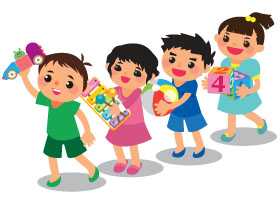
What You Can Do to Help Your Child's Development
What babies can do
What you can do
I can move freely from place to place
Make your home environment safe
I can climb onto low furniture
Keep me within your sight and watch out for home accidents
Keep my surroundings child-proof, so that I will not get hurt easily even if I climb up and down or run around
I can walk well and even run
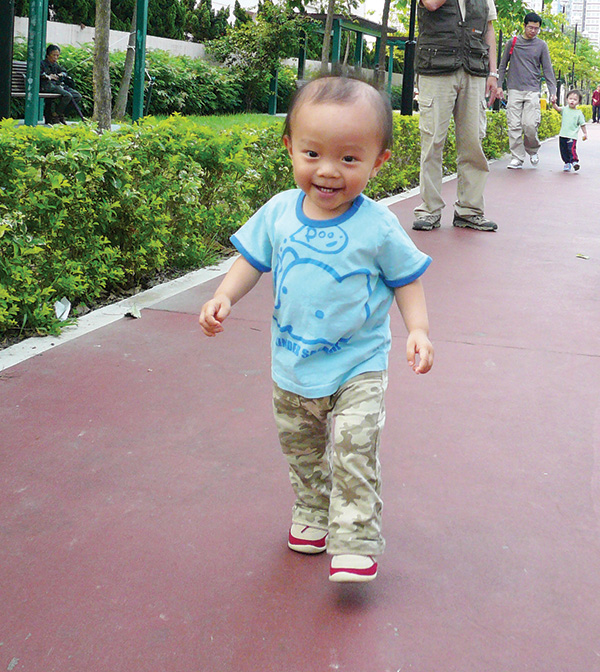
Let me play with some pull-along toys or a push cart to encourage me to walk
I can walk up and down stairs by holding onto support
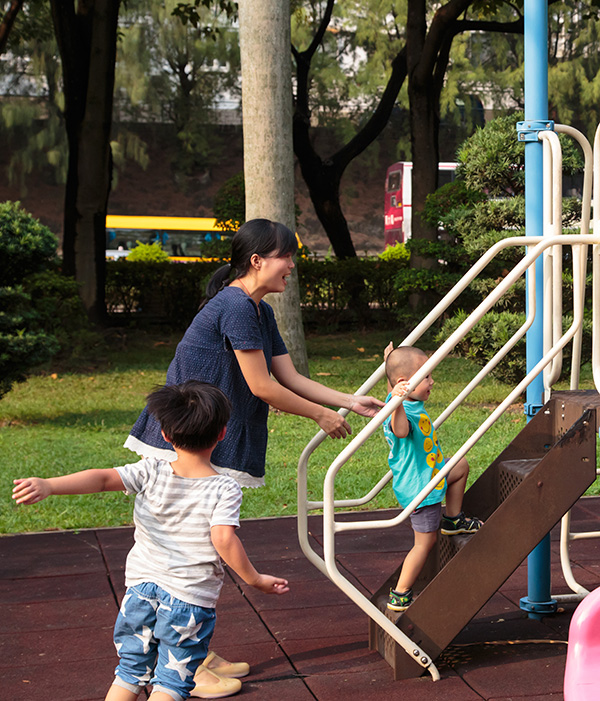
I try to kick a ball
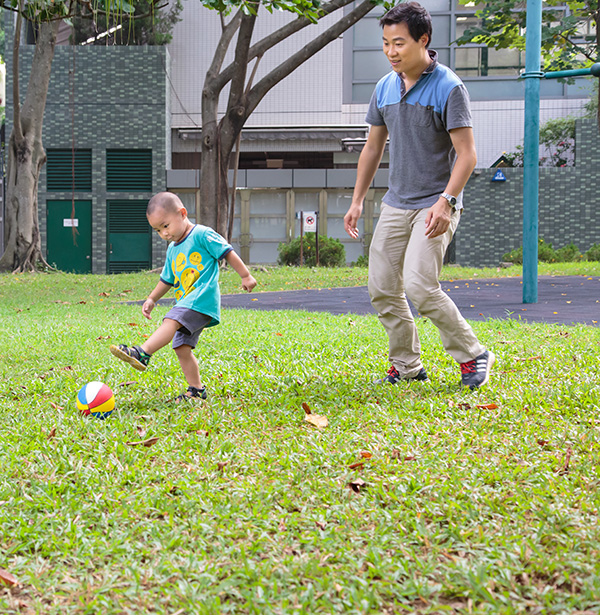
I need 3 hours of physical activities in a variety of ways, so take me outdoors and let me run and climb in the playground as well as meet some friends there!
Don't let me sit and watch screen devices.
My eye-hand coordination enables me to do more
Play with me
I can stack blocks
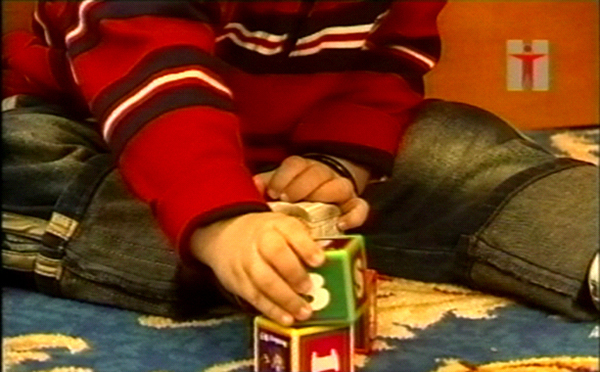
Stack up blocks with me
I can turn pages of a book
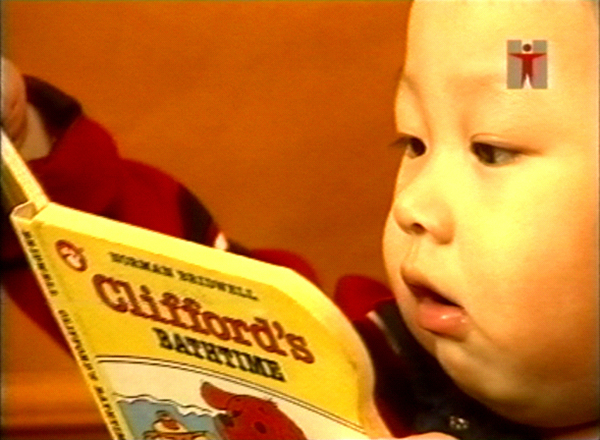
Read picture books with me
I can unscrew bottle caps and turn door knobs
Let me play some screwing toys
I can scribble with a crayon
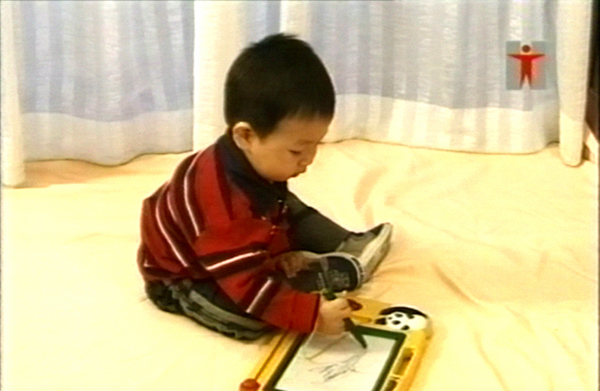
Let me scribble on paper with thick crayons
I try to use a spoon and a cup

Encourage me to feed myself with a spoon and a cup with handles
I begin to know uses of objects and some abstract concepts
Guide me to learn through play
I learn to sort objects by shape and size
Guide me to sort basic shapes and daily objects like socks and clothes
I enjoy pretend play
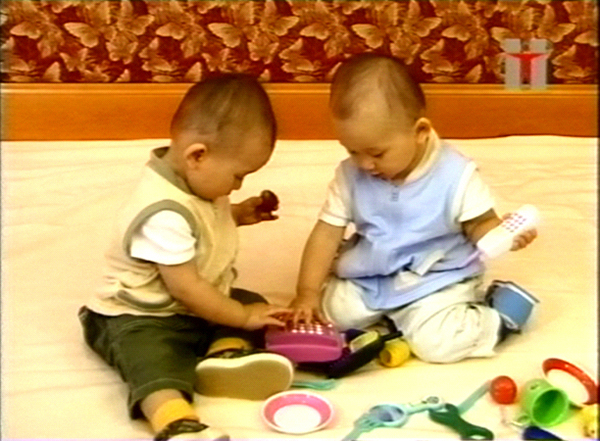
Play kitchen set, dolls, toy musical instruments and toy phone, etc., with me. Through pretend play, I have more practice on everyday experiences including learning about the use of objects. You can also stimulate my language development.
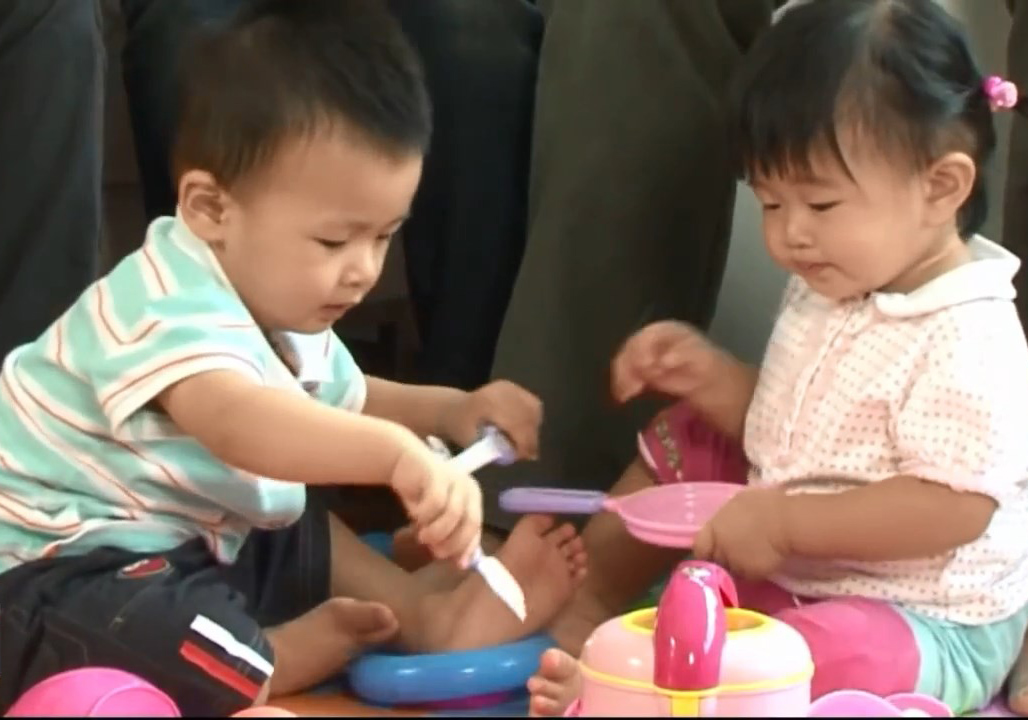
I also like rhythms and movements (nursery rhymes accompanied by movements e.g. Row Row Row Your Boat)

I try to communicate myself explicitly but still need you to understand how I feel
Guide me to get on with people and understand my feelings
I will point with my finger or speak to express my needs. Sometimes, I even direct you to what I am interested in.
Stay with me, care about me and share interesting things with me
I am still unable to control myself and will be frustrated and throw tantrums easily.
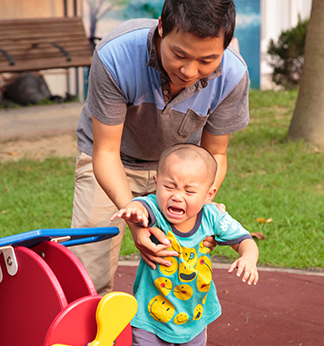
Be sensitive to my feelings and describe them for me so that I can learn about emotions
Let me learn to soothe myself when I am distressed by holding onto a comfy like a stuffed toy or a hankie.
Although I look more independent, I am still emotionally dependent on you
Be available when I need you to comfort me
I like to imitate acts of older kids or adults

Let me play with other kids to learn to get on with others and obey rules
I am self-centred and cannot share yet. Therefore, I will fight over toys with other kids
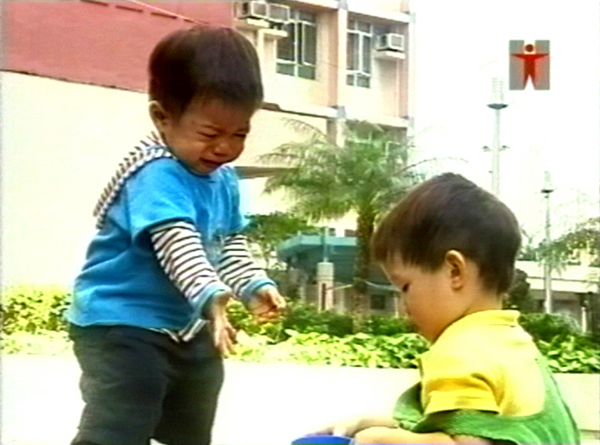
Encourage me to share with others, but be patient and accept that I may not be able to do so for I am still self-centred.
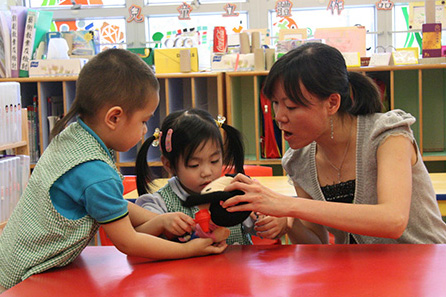
I understand what you say and can say more words
Talk with me
I can follow simple instructions without gestural cues, e.g. “give me the ball”
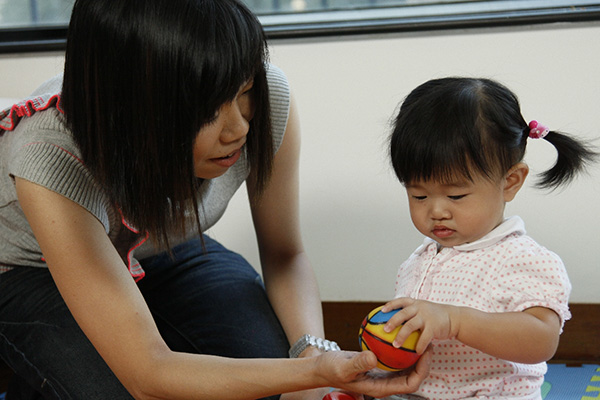
I can recognize major body parts
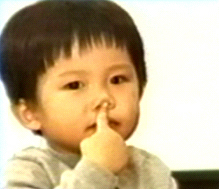
Talk with me more through daily situations and play. I will feel like a big boy or girl when you give me instructions to run small errands like throwing rubbish and putting away the shoes.
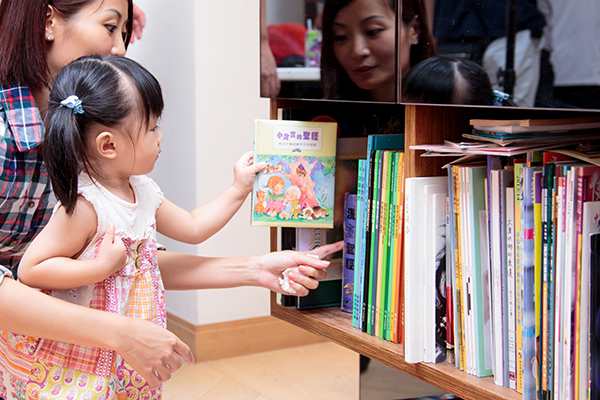
The words I understand are more than I can say
I can say more nouns and some verbs
I can combine two words to create a phrase when I am about 2 years old, e.g. “that's mine”, “daddy gone”
Every child is different in the pace of development, especially in language. Please be patient with me and guide me to use gestures and words to express myself. My language development would be enhanced gradually.
FAQs on Language Development of Children
Q: How to make use of our play time to teach my child to talk?
When playing with your child, having fun is the most important thing. Children spend most of their time on playing to explore and learn about the world around them. You can teach your child different words while you are playing with him, like nouns and related verbs.
Q: What factors affect the language development of children?
Both nature and nurture can influence children's language development. Inherited factors including the development of children in other aspects, e.g. hearing, intellectual functioning and intent to communicate are the pre-conditions for your child to learn to speak. On the other hand, environmental factors are also essential. Remember to provide ample opportunities for your children to express themselves and encourage them when appropriate.
Q: Why is my child slower than others in learning to talk?
The pace of language development varies among children, especially in verbal expression. Children have to understand before they can express in speech. The variation in speech is particularly wide among children of 1 to 2 years of age. This is however a short transition and children would usually speak more after this transitional period. Therefore, don't be over-alarmed if your child's language development takes a slightly different pace.
Q: What can I do to enhance my child's language development?
You can make use of opportunities in daily situations to help your child learn. You can tell him the names and uses of things around him or tell him what you are doing to let him learn about actions. Although he may not repeat after you, doing these help to enhance his understanding.
Q: My child still doesn't talk despite I have tried many things. What can I do?
If you have any concern about your child's language development, you can bring her to any Maternal and Child Health Centres or your family doctor for consultation regardless of whether she is in a transitional period.

